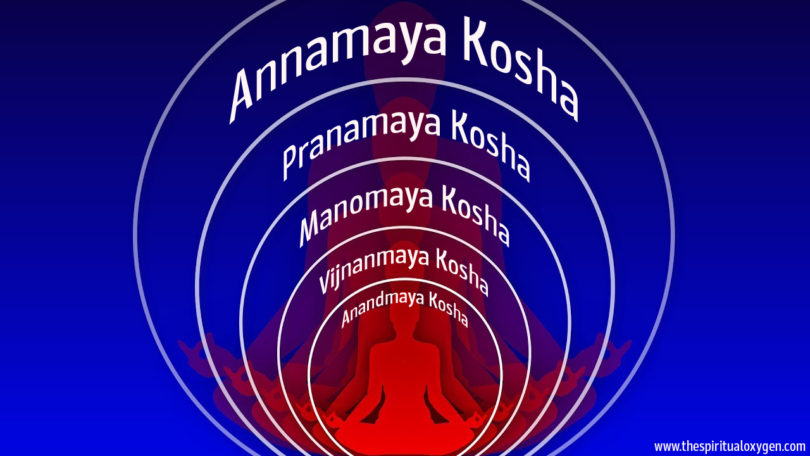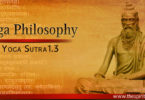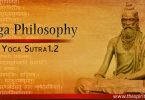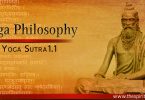The most central question in the Vedanta and other philosophical system of Indian philosophy is “who am I”. There are many concepts and approaches to this important question. One of concept is Panchkosha – five layers of existence. This concept of panchkosha can be found in many sacred Ancient Indian scriptures like Taittiriya Upanishad and Vivekacudamani etc.
Suggested read – Vedanta: introduction , its Origin, Types and Core teaching
The term Panchkosha is made up of two words panch means five and kosha means layer or sheath. According to this concept of panchkosha, the entire existence is of five dimensions. These five layers or dimensions are five different layers of our human growth and evolution, also they are five layers or sheaths that surround the human soul.
These sheaths have a wide spectrum starting from the closely packed physical body and evolving gradually to more subtle and sublime levels of energy, emotions, intellect and then finally the soul which is not the part of these five layers of existence but the witness consciousness.
For the realization of the self, all the practice of yoga helps us to be aware of every single layer of existence so that we can transcend these five layers of existence. Once one transcendent the all five layers of existence, the confusion about them disappear and self-realization take place. In other way one is able to achieve refined level of observation and response to it appropriately.
How do we develop this awareness? Our ancient yogis have given us tools to develop our awareness at multiple levels. Now lets discuss them one by one to have better understanding of them.
Annamaya Kosha (Layer of Food or Physical body)
The first and the outermost layer is called the Annamaya Kosha. The word “anna” means ‘food’ and the word “maya” means ‘composed of’ (not to be confused with a similar word “maayaa” which means illusion). This kosha represents our gross/physical body (sthoola-sharira).
This layer is a composite of the five great elements (panch-mahabhutas) – earth, water, fire, air and space. These five elements are the base of food and as well as physical body. This is the layer which comes from matter (composed of five elements) and sustained by matter (food which is made up of five elements) and dissolve back into matter (in the five elements). This layer needs food for its basic sustenance and hence it is named with Annamaya kosha.
This gross body is required to perform dharma and sadhana. If you see our first realization of self, it happens with this physical body only. Therefore we need complete experience of this body so that we can transcend our awareness and gain an easy access to the inner layers. It is important to realize that this body is mine but I am not the body.
Suggested read – Asana : what, why and how
We are responsible for taking good care of this layer/body. There are some practices which need to be done in order to sustain the health of this layer/body. To take care of this body we need to add some essential things to our lifestyle such as detox for the elimination of impurities, take appropriate diet, do some fasting and regular physical exercises.
Pranamaya Kosha (Layer of Vital Energy/ Energy body)
Annamaya kosha needs energy to function which is provided by the pranayama kosha. Without prana (energy) human body is just a gross matter or lifeless. Commonly we know existence as body, mind and consciousness but they are connected to each other with help of prana(energy). The entire functioning of our physio psychological system happens through prana.
The term paranayama is made of two words “prana” means ‘energy or life force’ and the word “maya” means ‘composed of’. This kosha is said to be subtle body (sukshma-sharira). Mahaprana said to be the origin of prana which further subdivided into five pranas. Let us have brief description of them.
- Prana: is responsible for all inputs into the body (like food, fluids, air etc.) for nourishment and it is an upward moving force(energy).”
- Apana: is responsible for all forms of elimination and reproduction functions (stool, urine, semen, menstrual fluid, carbon dioxide) and it is downward moving force (energy).
- Samana: is responsible for transformation (like food, oxygen, experiences) and it is an inward moving force (out to in).
- Vyana: It governs circulation on all levels and assist other pranas in their functioning. It moves the food, water, blood and oxygen throughout the body, and keeps our emotions and thoughts circulating in the mind. It is an outward moving force (in to out).
- Udana: is responsible for growth of the body and expression of emotions, the ability to stand, speech, effort, enthusiasm and will power. It is an upward moving force.
Practices like pranayama is most essential to energize and vitalize this kosha, but also other practices like mudra, bandha and pranic healing are used to energize and vitalize the pranamayakosha.
Suggested read – Introduction of Pranayama
Manomaya Kosha (Layer of Mind or Emotional body)
This kosha (layer) is more subtle then Pranyama kosha. The word “mano” means ‘mind’ and the word “maya” means ‘composed of’. Basically, this the layer of mind or our existence at the mental level known as manas. In yogic texts, manas is usually described as a part of the “antahakarana” (the inner instrument of cognition). Manas reacts to inputs received through five sense organs. The nature of this kosha is said to be indecisive (sankalpa-vikalpa).
The koshas, pranayama kosha and manomaya kosha are related to each other. When you experience agitation, stress or anger, your breathing is fast, shallow and irregular and when you are calm and peaceful, your breathing is correspondingly soft and regular.
Manomaya kosha can also be described as reactive mind which is rapidly recycled thoughts in the mind which gathers momentum to generate emotions. This kosha receives the inputs from the five senses therefore our surrounding has great influence on manomaya kosha which reflects in our physiology, thoughts, moods, emotions and actions commanded by this kosha. Imbalance in mind leads to stress (aadhi) and prolonged stress causes diseases (vyadi) in the pranayama and annnamaya kosha.
Suggested read – Lifestyle: Definition, Importance, tips for Healthy Lifestyle
How can you improve your mental or emotional health? Practices like Mindfulness (being aware of how the surrounding influence you), Mantra Japa or Affirmation chanting, Mouna (silence) and dharna (concentration) helps in elevating the health of this kosha.
Vijnanamaya Kosha (Layer of Wisdom or Intellectual body)
Vijnanamaya kosha is fourth layer from five layers of existence. “Vijnana” means ‘wisdom’, “maya” means ‘composed of’ so this kosha is known as the wisdom body. This is the kosha of buddhi (intellect) and intuitive knowledge. Our intellect gives us the power of discernment and discrimination.
This is the layer of ability, like ability to think, manage your emotions, make choices and discern, thus we can differentiate between good and evil, between right and wrong etc. This layer is a higher faculty present in humans to guide mastery over basic instincts. our intellect is driven by either ego and past memories which leads to pain and suffering or driven by pure intuition which gives us satisfaction and happiness.
Suggested read – Meditation : Myth and True meaning
By purification of mind (but also body purification and control over breath) our intellect becomes pure. By building the ability of observation, proper mental rest and meditation we can enhance the functioning of vijnanamaya kosha.
Anandamaya Kosha (Layer of Bliss or Bliss body)
Anandamaya kosha is the highest state of evolution in manifested existence. The word “ananda” means ‘bliss or pure joy’ so this is the layer of existence responsible to experience bliss or pure joy. This pure joy is beyond any sensory inputs or any of the past experiences. This kosha is nearest to our true self (consciousness).
Bhakti (devotion), contentment and joyfully working can helps us to enrich the heath of this layer. We can experience this bliss as a result of “samadhi”.
Suggested read : Foundation of Spirituality
Who am I?
Through the different practices described for each kosha one can transcendent these five layers. As a yogi (practitioner of yoga) transcendent these five layers of existence, he realizes that these layers are just the object of experience and subject to change. But beyond them there is one witness consciousness who is constantly witnessing, is unchangeable and ever pure.
The entire system of yoga (raja yoga and hatha yoga) works as tool to build the awareness so that one can realize the self. Avidhya (ignorance about self) is the main cause of confusion and suffering, therefore one continuously makes efforts to realize their true self.







